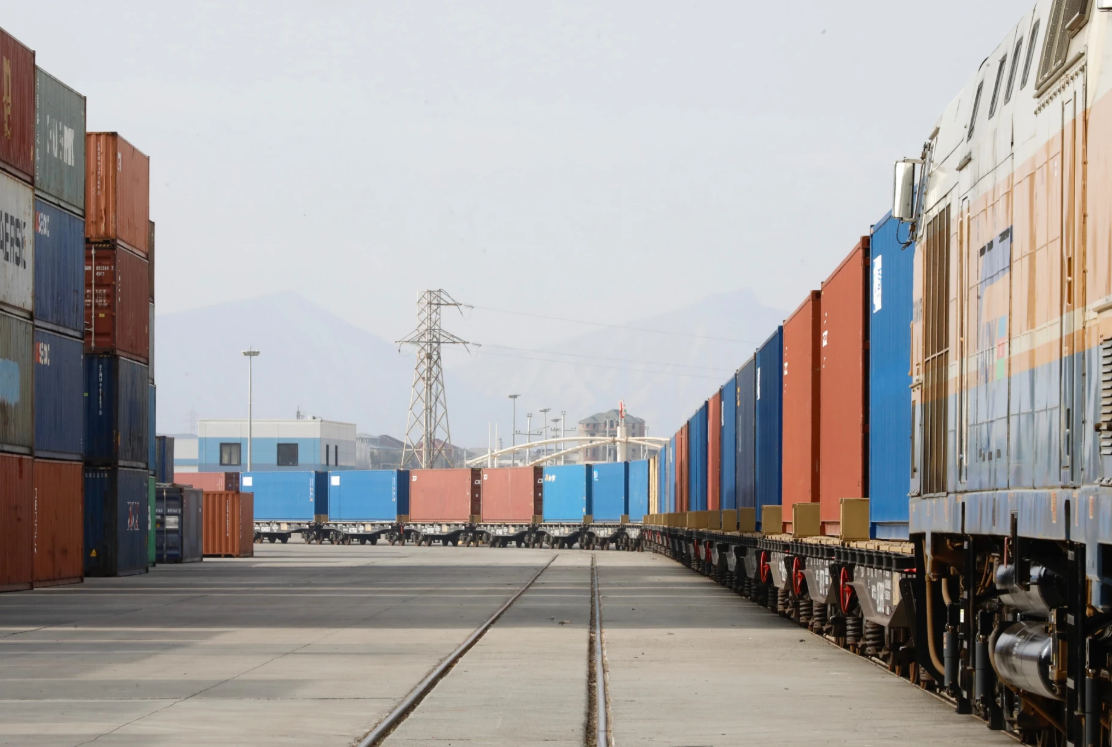BAKU, Azerbaijan, November 6. Azerbaijan Railways CJSC (ADY) is continuously working to organize cargo transportation more efficiently on the North-South and East-West international transport corridors passing through the country, to implement operations more quickly, and to eliminate bottlenecks, a source in ADY told Trend.
According to the source, for this purpose, meetings are held with partners, discussions are held, agreements are reached, and work is underway to reconstruct the infrastructure.
The source noted that currently, the design and construction of the Sumgayit-Yalama railway line, which is one of the important segments of the North-South corridor passing through the territory of Azerbaijan, is continuing.
"The design work of the Sumgayit-Yalama railway line has been completed, and 96 percent of the construction and installation work on the first and second sections of the line has been completed. Meanwhile, work on the reconstruction of the Alat-Osmanli-Astara railway line, which is an important part of the North-South corridor, began in 2024.
Construction work is planned to be completed by 2028. As many as 55 percent of the design and 37 percent of the construction and installation work on the Alat-Osmanli section of the line has been completed," the source explained
The overall infrastructure renewal will allow for boosting efficiency and speeding up implementation of freight transportation operations.
Recently, ADY has completed the work on the implementation of the alternating current (AC) system in the Ujar-Hajigabul section (122 km) of the energy system on the Baku-Boyuk Kasik line, the main trunk railway line through which transit cargo is transported on international corridors passing through the territory of Azerbaijan, as part of the design, supply, and installation of the line.
Thus, the transition of the Baku-Boyuk Kasik main railway line to the alternating current system in the Ujar-Hajigabul section was fully ensured.
"The transition to the alternating current system will lead to an increase in the volume of cargo transported by railways by improving the traction power of electric locomotives, saving energy and other resources, as well as increasing the speed of trains. This is an important advantage, especially for trunk railways," the source said.
The source emphasized that the implementation of the AC system in the Baku-Boyuk Kasik section will allow increasing the efficiency of cargo transportation operations and cargo volumes on the Middle Corridor.
In general, the main trunk corridors passing through the territory of Azerbaijan, especially the Middle Corridor, will directly benefit from this modernization.
The source highlighted that one of the important agreements on the Middle Corridor was recently reached within the framework of the Kazakhstan Transport Week.
The heads of the railway administrations of Azerbaijan, Kazakhstan, and Georgia, Rovshan Rustamov, Talgat Aldibergenov, and Lasha Abashidze, signed a Roadmap on eliminating bottlenecks along the Trans-Caspian International Transport Route (Middle Corridor).
"According to the document, improving infrastructure, updating traffic patterns, and optimizing operational procedures to eliminate bottlenecks, as well as strengthening coordination between the three countries for the development of the Middle Corridor, maintaining infrastructure and operational efficiency, and preparing for increasing cargo volumes are identified as priority areas," the source added.
To note, North-South and East-West transport corridors are major routes connecting different regions for international trade, with the North-South corridor (INSTC) linking India, the Persian Gulf, and Russia to Northern Europe, and the East-West corridor (e.g., TITR) connecting China and Asia to Europe, both designed to reduce transit times and costs compared to traditional shipping routes like the Suez Canal.
Stay up-to-date with more news on Trend News Agency's WhatsApp channel







